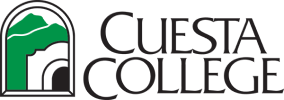
Program Summary
NURSING, REGISTERED (30 UNIT OPTION) - Certificate of Achievement
The Cuesta College Associate Degree Nursing Program (ADN) is approved by the California Board of Registered Nursing (BRN). The purpose of the nursing program is to prepare students for entry level registered nursing positions in a variety of health care settings in California. Graduates of this two-year program are eligible to take the National Council for Licensure Examination (NCLEX), and upon successful completion, become licensed as a Registered Nurse (RN) in the State of California.
Career Opportunities
Entry level registered nursing positions.
Required Courses (29 credits)
Units: 29.0
Students will be identified by the director of nursing as having met the BRN requirements under the LVN 30-unit option. Convictions of a misdemeanor or felony may constitute grounds for denial of licensure.
NRAD 102H
BRIDGE PATHWAY TO RN READINESS
0.5
NRAD 103H
THIRD SEMESTER NURSING READINESS
0.5
NRAD 120C
SUPPLEMENTARY NURSING SKILLS PRACTICE THIRD SEMESTER
0.5
NRAD 120D
SUPPLEMENTARY NURSING SKILLS PRACTICE FOURTH SEMESTER
0.5
NRAD 203A
NURSE CARING CONCEPTS III
2.0
NRAD 203B
NURSE CARING PRACTICUM III
5.0
NRAD 203D
NURSE CARING FOR MEDICAL-SURGICAL PATIENTS
2.0
NRAD 204A
NURSE CARING CONCEPTS FOR CLIENTS PSYCHIATRICALLY AT RISK
2.0
NRAD 204B
NURSE CARING FOR PEOPLE AT RISK PRACTICUM
5.0
NRAD 204D
NURSE CARING FOR PEOPLE AT RISK CONCEPTS
2.0
BIO 204
MICROBIOLOGY
5.0
BIO 212
HUMAN BIOLOGY
3.0
BIO 212L
HUMAN BIOLOGY LABORATORY
1.0
Total: 29.0
Program Outcomes
Demonstrate effective therapeutic communication.
a. Program Student Survey —(Benchmark 75% at the “very often” or “always”)
b. Alumni survey (1yr out) —(Benchmark 75% at the “very often” or “always”)
c. Employer Survey (1 yr out)—(Benchmark 75% at the “very often” or “always”)
d. Preceptor Evaluation of students —Communication—(Benchmark 75% at the "satisfactory" or "above")
Implement critical thinking effectively when applying the nursing process and caring framework in providing patient care.
a. NCSBN NCLEX PROGRAM REPORT--looking at any area which is lower than or equal to 50th percentile
b. Program Student Survey —(Benchmark 75% at the “very often” or “always”)
c. Alumni survey (1yr out)—(Benchmark 75% at the “very often” or “always”)
d. Employer Survey (1 yr out)—(Benchmark 75% at the “very often” or “always”)
e. Faculty Evaluation-Culminating project-4th semester —SIMULATION (Benchmark—MAJORITY of faculty will agree)
f. Advisory Committee minutes
Integrate knowledge gained from biological, social, and nursing sciences with clinical practice in meeting the complex needs of diverse groups of patients in multiple settings.
a. NCSBN NCLEX PROGRAM REPORT--looking at any area which is lower than or equal to 50th percentile
b. NCLEX results (Benchmark 90%)
c. Program Student Survey - (Benchmark 75% at the “very often” or “always”)
d. Alumni Survey (1 yr out) - (Benchmark 75% at the “very often” or “always”)
Practice safely and ethically within scope of practice while providing patient care and working with the health care team.
a. Program Student Survey —(Benchmark 75% at the “very often” or “always”)
b. Alumni survey (1yr out)—(Benchmark 75% at the “very often” or “always”)
c. Employer Survey (1 yr out)—(Benchmark 75% at the “very often” or “always”)
Demonstrate basic leadership in nursing practice.
a. Program Student Survey—(Benchmark 75% at the “very often” or “always”)
b. Alumni survey (1yr out)—(Benchmark 75% at the “very often” or “always”)
c. Employer Survey (1 yr out)—(Benchmark 75% at the “very often” or “always”)
Apply age appropriate concepts in nursing practice.
a. NCSBN NCLEX PROGRAM REPORT —looking at any area which is lower than or equal to 50th percentile
b. Program Student Survey—(Benchmark 75% at the “very often” or “always”)
c. Alumni survey (1yr out)—(Benchmark 75% at the “very often” or “always”)
d. Employer Survey (1 yr out)—(Benchmark 75% at the “very often” or “always”)
Apply cultural sensitivity in nursing practice.
a. Program Student Survey —(Benchmark 75% at the “very often” or “always”)
b. Alumni survey (1yr out)—(Benchmark 75% at the “very often” or “always”)
c. Employer Survey (1 yr out)—(Benchmark 75% at the “very often” or “always”)